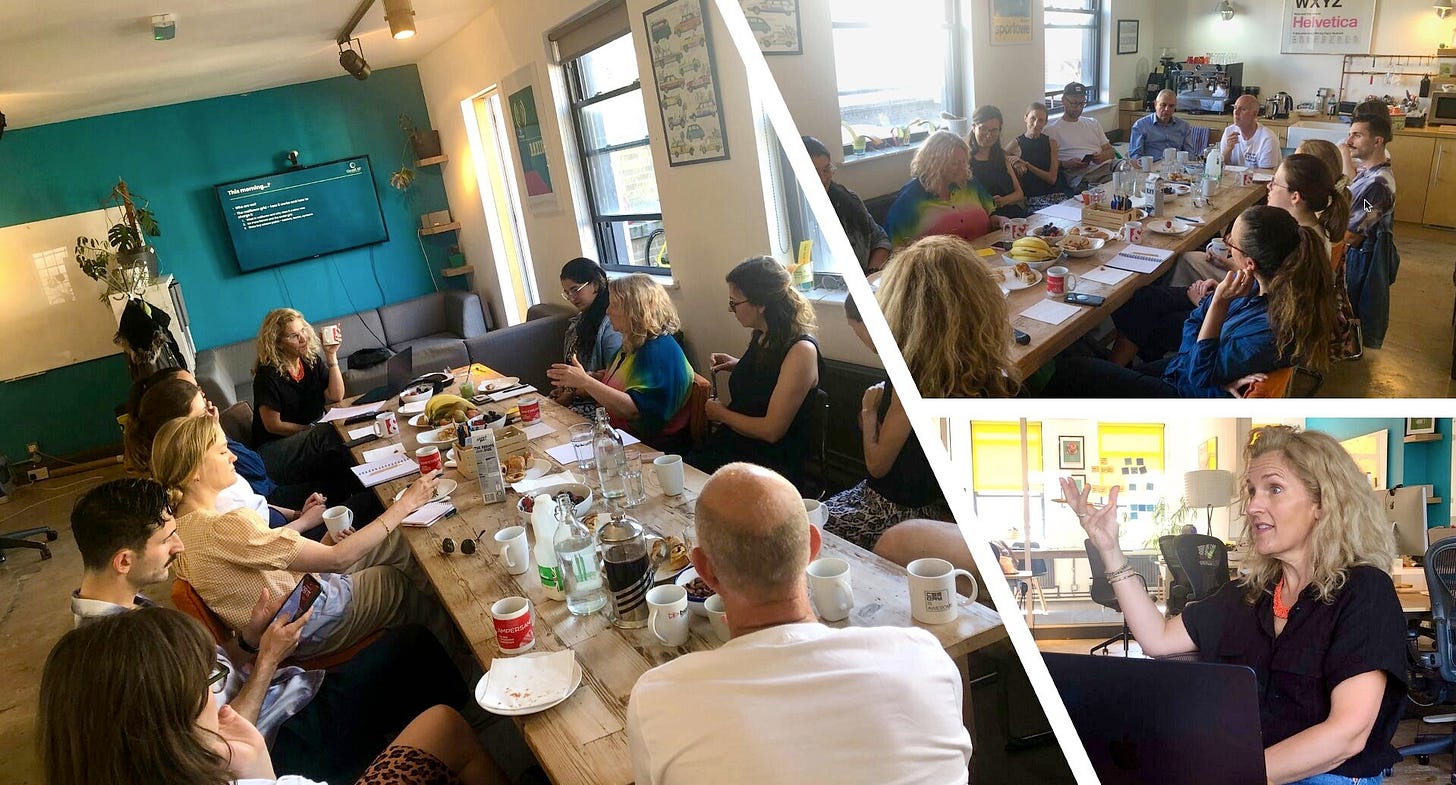We’re in a strange time for leadership.
Across industries, there's a pattern emerging: leaders telling teams to ship faster, but can urgency be ordered? I find it pretty unrealistic, if not counterproductive. Somehow, we’ve mistaken shouting about speed for strategy.
But if you keep asking people to go faster and nothing changes, maybe it’s time to ask a better question: what’s getting in the way of speed?
Doing the same thing over and over and expecting different results? That’s not leadership, that’s the definition of insanity.

I worked for four years at a startup called Doddle before it got acquired. We had the opportunity to work with Olympic rower and gold medalist Ben Hunt-Davis, author of Will It Make the Boat Go Faster? His book helped us reshape how we thought about speed. It wasn’t about telling people to row harder — it was about identifying the parts of the business that needed to shift, align, or be reimagined to enable progress.
Speed comes from clarity, focus, and alignment, not from pressure.
That’s the kind of strategic leadership we need more of.
What good leadership looks like
It’s about creating the right environment for people to flourish. And to do that, you need to stop shouting and start listening.
Don’t miss the next article
1. Lay the foundations for psychological safety
Good leaders don’t just set deadlines. They set the tone.
They create a space where people feel safe to speak up, ask questions, and be honest. It’s not about having all the answers because it’s realistically impossible, but about enabling teams to build the resilience they need to navigate the uncertainty that lies ahead.
In uncertain times, resilience is key. But people can’t be resilient if they’re worried about losing their jobs or their roles changing.
When people are anxious about their future, it’s hard to concentrate, let alone thrive. They don’t need vague reassurances. They need something to hold on to: clarity, care, and a plan they can believe in. One that offers both growth and direction.

I was recently at the Service Design Breakfast Club hosted by Clearleft in Brighton UK, where Belinda Gannaway spoke about resilience beautifully. One thing she said has stayed with me.
People are happier and more productive when they have strong relationships at work.
It sounds obvious, but often relationships are overlooked or we believe they just happen. We leave them to happen by chance, but especially in remote or hybrid environments, those connections need to be built with care.
We talk about collaboration, but people can’t collaborate if they don’t know each other. Without rapport, everything becomes clunky and transactional.
Leaders need to create moments of collaboration and build the conditions for trust, connection, and a sense of belonging. That’s where resilience begins.
A few things worth asking:
- Do people in my team feel safe enough to take risks or speak up?
- Do they have meaningful relationships, or are they just task-based interactions?
- Have I created a space where they genuinely want to contribute?
Telling people what to do is the lowest form of leadership. People don’t want instructions. They want someone who clears the way so they can do good work.
2. Invest in growth
We ask people to be more innovative. To embrace AI. To rethink how we design and build. To move faster. To do more.
But when are we giving them space to learn any of it?
You can’t simply impose new expectations on people without providing them with the time, tools, and structure necessary to respond effectively. Growth needs support. It needs breathing room.
A good leader recognises where skills need to shift and provides the space to learn. They notice the gaps, and they help close them through shared learning, peer coaching, and time for curiosity.
Telling people just to figure it out while piling on more pressure isn’t leadership.
3. Create direction
Leadership is about setting a vision. But also showing people how we’re going to get there.
And that’s where many teams fall short. The “how” is missing, unclear, or so abstract it becomes meaningless.
Middle management, which is often the first to be cut in lean times, plays a crucial role here. They’re the ones who translate big ideas into meaningful action. Those who create alignment between departments and between vision and reality. Without them, teams are left interpreting loose goals on their own, often pulling in completely different directions.
Closing 50 deals, increasing revenue by $50m, reaching 1m active users. Those aren’t goals. People need help understanding how to achieve them.
We want alignment. We want focus. We want momentum. However, you don’t reap any of these benefits if you don’t invest time in creating a strategy and communicating it to everyone in the organisation.
4. Forget vibe coding, create the vibe
Culture isn’t something you get by accident. Leaders need to create the vibe they expect to see. This can only be achieved through consistency, care, clarity, and the way they present themselves every day.

I can see this myself. When I have a week where I'm not feeling well, feeling confused, and not fully present in meetings, the whole team experiences the same. When I keep checking in, making sure I’m unblocking people and re-energising everyone, I notice better results and quicker progress.
If you want trust, energy, and shared momentum, make space for it:
- Start conversations that matter
- Celebrate small wins
- Be honest
- Be human
- Make collaboration enjoyable, not performative
Culture is made in the quiet moments. It’s in how you run a meeting. It’s in how you respond to a missed deadline. It’s in how you handle disagreement. It’s the chit-chat at the beginning of a call. It’s when you genuinely care about how someone is? It’s a simple message to say that the design looked great! It’s really the simple things.
All of it builds up into something people either want to be part of, or can’t wait to escape.
Leadership isn’t about shouting louder, going faster, or making the strategy deck look shinier.
It’s about building the kind of environment where people can do great work and feel good doing it, even when things are uncertain, especially when they are.
